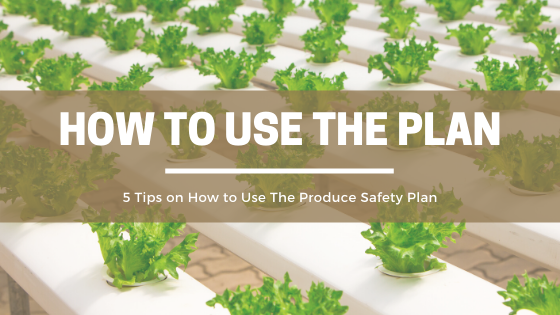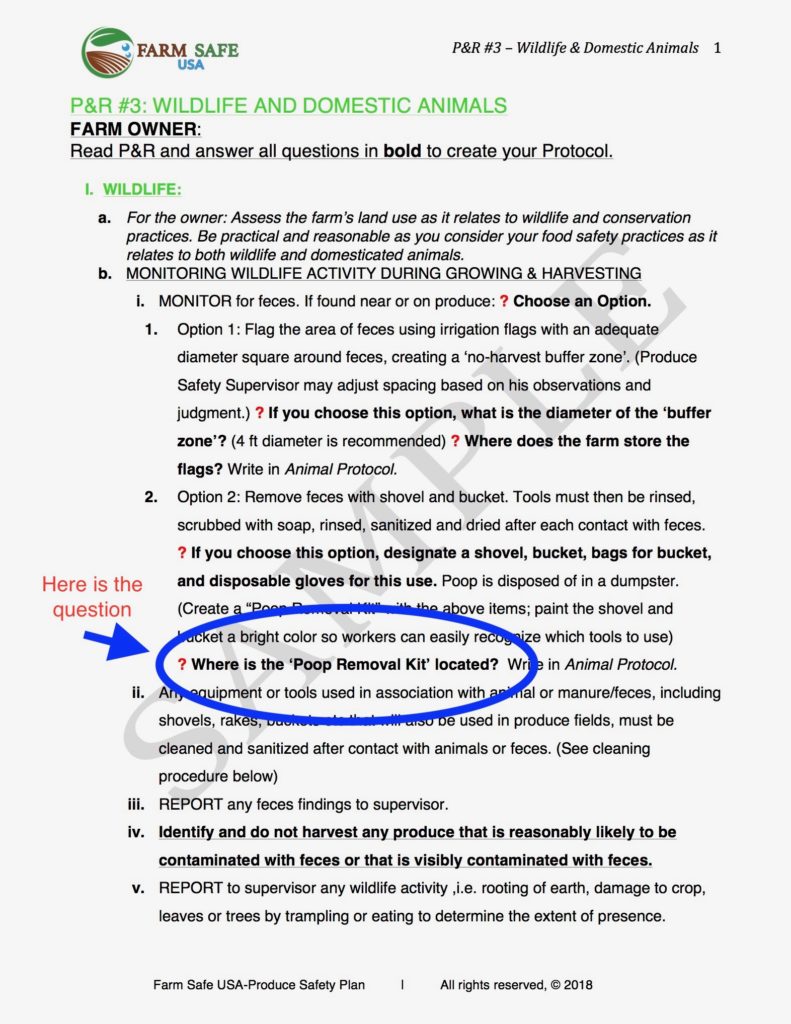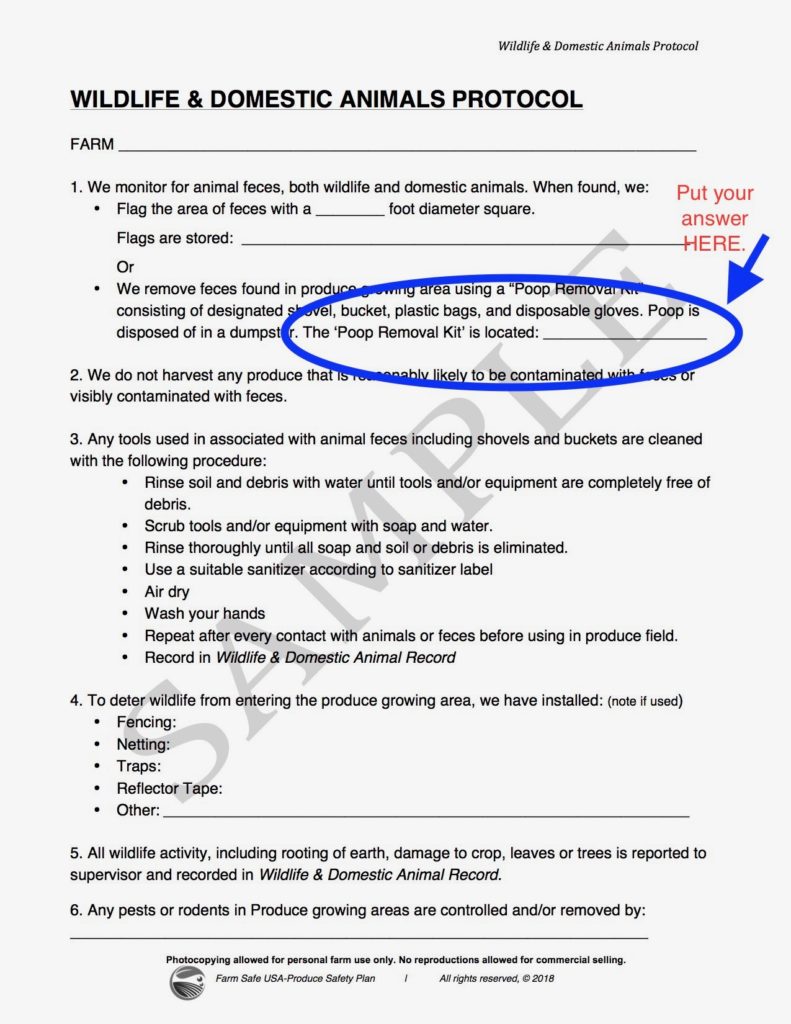How to Use The Produce Safety Plan?
We have written our Produce Safety Plan with the farmer in mind. We wanted to make it as simple and easy to use as we could. We know you would much rather be in the field than at a desk messing with paperwork. So our layout was designed to make is easy to navigate, read, find, fill-out and complete your food safety plan. But how exactly does one use this book? Well, following is a list of some tips on how to use the Produce Safety Plan. Don’t have a Plan yet? Buy one HERE.
How to use the Plan TIP #1: Read Through the Procedures and Requirements
When you first get your plan, you might be tempted to jump right in filling in the blanks. But the best way to start when you want to use the Produce Safety Plan is to read through the whole book. Even if you went through the Produce Safety Alliance Grower Training Course, it is still a good idea to read through our Plan before implementing the procedures.
- Know the requirements! It’s important to reacquaint yourself with the requirements and understand the procedures involved in each section, along with knowing which records go with which section etc.
- Determine what sections you need. At the very least, skim through the whole book. See how it is organized and determine if there are procedures you don’t need or requirements you do not fall under. For example, if you do not use ANY biological soil amendments, then you would not need the section on ‘Biological Soil Amendments’. You can put that section either in the back of the book, or file it in case your practices change in the future.
- Read before doing your assessment. Reading through all the P & R’s will help with understanding what is required or recommended from the law before you complete your Farm Annual Assessment.
How to use the plan TIP #2: Create Your Farm Specific Protocols
The next tip on how to use your Produce Safety Plan after reading through the book is to fill in the blanks and write your protocols.
- Make copies. Before writing a protocol, make copies of the protocols. Put the masters in the back of the book or a file for the masters.
- Answer the questions. Read through the P&R (Procedures and Requirements) for that section. Once you’ve read them, then go back through the section and find the questions in bold within the procedures. These will direct you to answer for this particular food safety practice for your specific farm and situation. Then fill in the blank on the corresponding protocol. Each section has the procedures to follow, with the pointed questions to develop your protocol and the associated records.
- Keep the protocol in front of the P&R for easy access. After filling out your protocol, keep it in your binder in front of the procedures and requirements to make it easier to access. Your workers will know right where to go if they have questions on the proper procedure for a given practice.
See the example below. To see more page samples of the book, click HERE.
Do you need to purchase a plan? Check out our Buy The Plan page.
How to use the plan TIP #3: Keep Your Records
This tip on how to use the Produce Safety Plan should be readily understood. But I think should still be mentioned to make using the book as easy and clear as possible.
- Make copies! First, be sure to make copies of the records. This should go without saying, but be sure to make copies of each record that you have determined will be useful for your farm. Then keep the masters in a file or the back of the book.
- Determine what records you’ll use. Remember, not every record we included in our Produce Safety Plan is required, some are recommended. It’s up to the owner and safety supervisor of the farm to determine which records the farm will use. Keep in mind, those records are what inspectors will be reviewing, so use what you think you need, and maybe even more. Be sure you are recording all your food safety practices. Being pro-active in your record-keeping will go a long way when those inspectors begin reviewing.
- When to record is highlighted. To make it easy to know when to record a specific practice, we have highlighted as such in each procedure. When it is required to record the practice and which record to use, it will be highlighted. So look out for the highlighted words.
- Use a clipboard. We recommend using clipboards for each record type. Keep them in a convenient and visible place near where the activity takes place. For example, for the restroom cleaning record, hang the clipboard just inside the door. This will ensure it gets used at the frequency you have determine. Having your records in sight for you and your workers will make keeping records easier and more routine.
According to the FDA, all required records must include:
- The name and location of your farm
- Actual values and observations obtained during monitoring
- An adequate description (such as the commodity name, or the specific variety or brand name of a commodity, and, when available, any lot number or other identifier) of covered produce applicable to the record
- The location of a growing area (for example, a specific field) or other area (for example, a specific packing shed) applicable to the record
- The date and time of the activity documented
Except as otherwise specified, required records must also be:
- Created at the time an activity is performed or observed
- Accurate, legible, and indelible and
- Dated and signed or initialed by the person who performed the activity documented
If you want to read the full article by the FDA about records under the Produce Safety Rule, Click HERE.
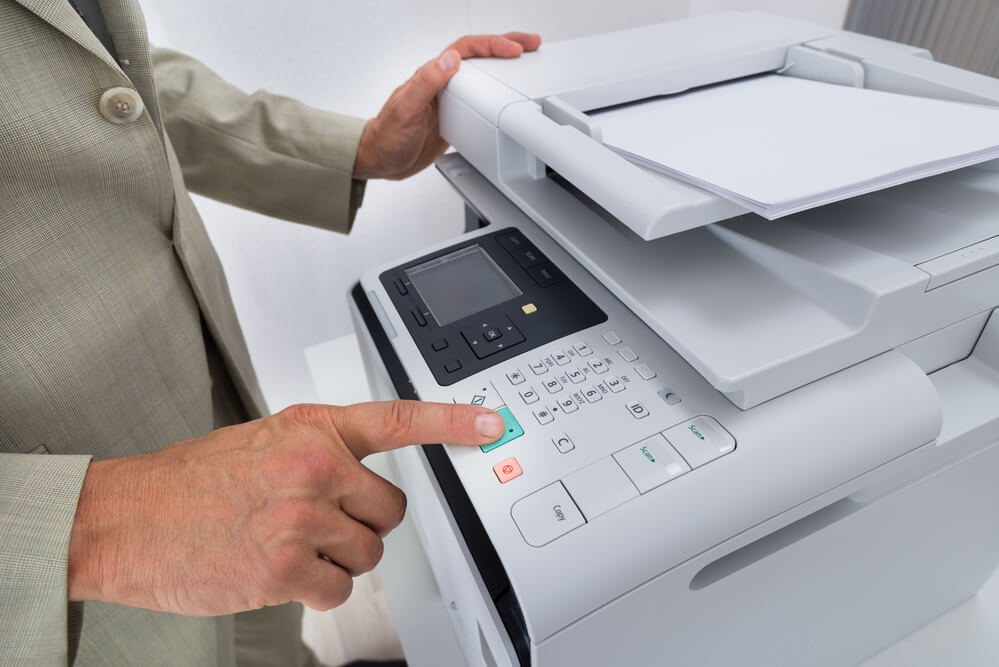
Remember, copying of records or protocols are for personal farm use only. And is only for the farm who purchased the Produce Safety Plan. Thank you.
How to use the plan TIP #4: Complete Your Annual Farm Inspection & Assessment
You have read through the procedures and requirements, and filled in your protocols. You should now be familiar with what you need to be looking for and doing when you complete your annual farm inspection. This is the next tip on how to use the Plan.
In the Plan is a convenient Annual Farm Inspection and Pre-Harvest Assessment for Food Safety Checklist. It will make it easy to get your farm ready for the new season and keep your food safety practices up-to-date. Before completing the checklist, make a copy so you can use it year after year.
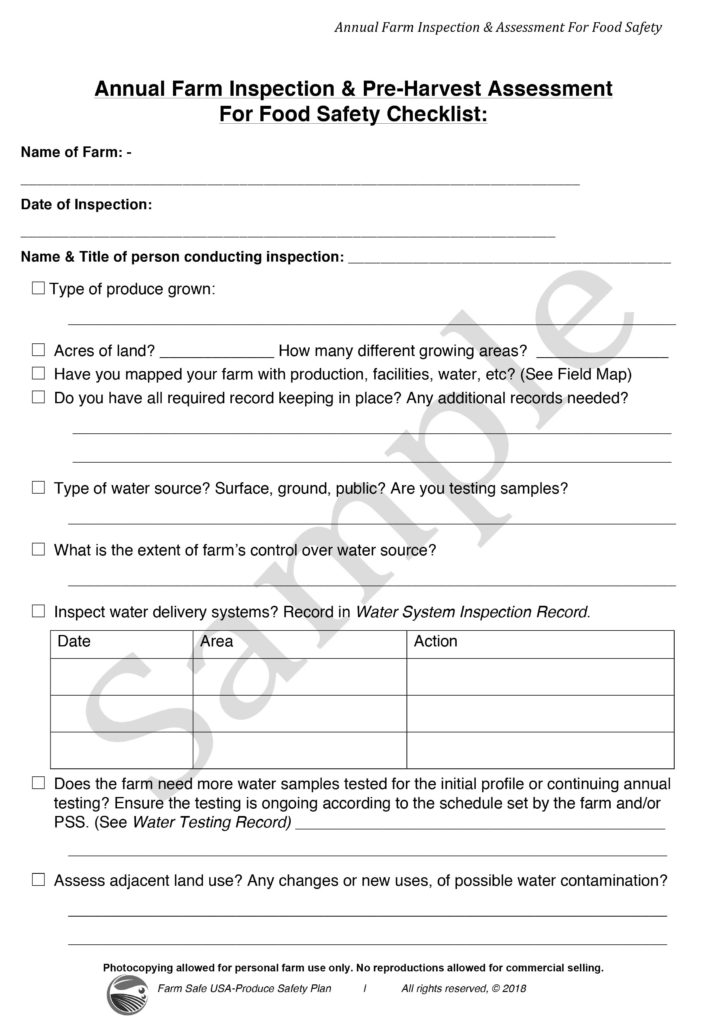
It’s recommended to do an inspection/assessment every year at the beginning of the season. Things can change from year to year. It’s important to stay on top of what is happening on your farm that may be different from last year. Determine what you might need to adjust in your food safety practices to include those changes.
(Sharing of the checklist or any other record or procedure with anyone other than the farm who purchased the Plan is prohibited by copy write law.)
How to use the plan TIP #5: Keep your Book Organized
No one likes paperwork. But it is a necessary thing, both to comply with the law and to keep yourself and your farm organized. Our plan is perfect for both.
We created the Produce Safety Plan to be used year after year. And to be able to personalize and add to it as fits the needs of individual farmers. This is why we use a heavy duty binder rather than some kind of permanent binding. The binder allows you to add or remove your documents and records easily. You can keep everything organized and together in one place. Which will be very handy when an inspector comes or a buyer wants to see your food safety plan.
Once you have filled up one of the copied records, keep it stored in the binder under the appropriate section. Keep them all together for the year. Then at the end of the year or season, put them in a file and keep stored for 2 years.
The back section of the book is for additional documentation. Receipts, schedules, sanitizer or other chemical concentration formulas, worker training lists, and any other documents you need to keep to show you are current on your practices should be filed here.
Hopefully these 5 tips on how to use the Produce Safety Plan will make it even easier and smoother to get your food safety plan ready and put into place. We wish you success and a great growing season. If you ever have any questions on how to use the plan or to see if the plan is right for your farm, leave us a comment or give us a call. We’d be glad to help in any way we can. If you still need your food safety plan, you can purchase it HERE!
You can reach us at: 850-508-1636 – Eric | 530-906-5001 – Kathleen | farmsafeusa@gmail.com
Happy Farming….. Kathleen and Eric
